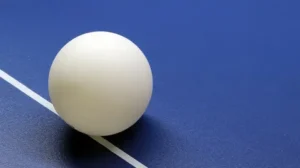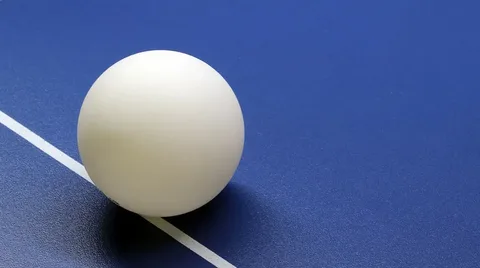How Light is the Table Tennis Ball? Unpacking the Physics of a Ping Pong Ball’s Weight and Flight

If you’ve ever played table tennis—or ping pong, as it’s often called—you’ve likely noticed just how light the table tennis ball is. You might’ve even wondered, “How light is the table tennis ball, really?” Well, you’re in the right place to uncover that answer! Although these tiny balls seem simple, there’s a lot more to them than meets the eye. From weight to material to physics, the design of a table tennis ball plays a huge role in how it behaves in the game.
In this article, we’ll break down everything you need to know about the weight and composition of a table tennis ball. We’ll answer common questions, delve into the science of its flight, and explore why being so light makes the game unique.
Why Weight Matters in Table Tennis
The weight of a table tennis ball may seem trivial, but it’s actually one of the game’s defining factors. It directly affects how the ball moves, bounces, and reacts to spins, making the lightweight design essential to fast-paced play.
Quick Facts About Table Tennis Ball Weight
The standard weight of a table tennis ball is 2.7 grams.
The ball measures 40 millimeters in diameter.
Table tennis balls are hollow, making them incredibly light compared to balls used in other sports.
When you ask, “How light is the table tennis ball?”, the answer is incredibly light. To put it in perspective, 2.7 grams is roughly the weight of a small paperclip. This weight standard ensures consistency across all professional and recreational play.
The Structure of a Table Tennis Ball: Why So Light?
So, what makes a table tennis ball so light? It all comes down to the materials and design.
Composition of a Table Tennis Ball
Modern table tennis balls are made from a type of plastic called celluloid or ABS (Acrylonitrile Butadiene Styrene). These materials are lightweight, durable, and easy to mold into a perfect sphere. This change was actually implemented to make balls safer and more environmentally friendly, replacing the more flammable celluloid that was used in older models.
Hollow Inside: Unlike balls in other sports, table tennis balls have a thin plastic shell with a hollow interior. This lack of interior mass makes the ball exceptionally light.
Uniform Thickness: The thickness of the shell must be uniform to ensure balanced flight and spin, critical for high-level competition.
This special design isn’t just for looks or safety; it also impacts how the ball travels through the air and bounces off the table. So next time you play, you’re handling a piece of clever engineering!
How Does the Lightness Impact the Game?
If you’ve ever noticed how fast-paced and intense table tennis can get, a lot of that has to do with how light the table tennis ball is. A lighter ball means more speed, sharper spins, and greater unpredictability, all of which make the game exciting and challenging.
The Role of Weight in Spin
One of the most noticeable effects of a light table tennis ball is how it reacts to spin. Players can generate a variety of spins—like topspin, backspin, and sidespin—that change the trajectory and bounce of the ball.
Topspin: Causes the ball to dip faster, making it tough for opponents to return.
Backspin: Slows the ball down, forcing opponents to lift their shots more.
Sidespin: Curves the ball to the side, catching opponents off guard.
Because the ball is so light, these spins are more pronounced, adding layers of strategy and skill to the game.
Wind Resistance and Airflow
Since the table tennis ball is so light, it’s also easily affected by airflow and even slight breezes. For instance, outdoor games can be unpredictable because even a gentle wind can blow the ball off course. Indoors, where airflow is controlled, the ball’s flight path remains consistent, allowing for competitive play without interference.
Bounce Dynamics
When a table tennis ball hits the table, its light weight means it doesn’t bounce as high or as fast as a heavier ball might. The bounce height of a regulation ball from 30 centimeters is about 23 centimeters, which has become the benchmark for competitive play. This lower, quicker bounce creates the quick exchanges and reflex-testing rallies that make table tennis so unique.
Frequently Asked Questions
1. How light is the table tennis ball compared to other sports balls?
Compared to other balls, the table tennis ball is extremely light. Here are some comparisons:
Table Tennis Ball: 2.7 grams
Tennis Ball: 56-59 grams
Baseball: 142-149 grams
Soccer Ball: 410-450 grams
This weight difference is what makes table tennis such a distinct and high-speed game compared to other sports.
2. Why is the table tennis ball hollow?
The hollow design helps maintain the ball’s light weight, which is essential for the high speeds, spins, and bounces in table tennis. The hollow core allows the ball to be light while remaining firm enough to withstand powerful hits.
3. Can a table tennis ball break easily?
Yes, due to their thin plastic shell, table tennis balls can crack or dent, especially during intense play. However, modern ABS plastic balls are designed to be more durable than the traditional celluloid balls.
4. Does the weight of a table tennis ball affect its speed?
Yes, a lighter ball is easier to accelerate. As a result, even slight taps can send the ball flying across the table. This speed is key to the game’s fast-paced nature and rapid rallies.
5. Why do table tennis balls float on water?
Because of its low density and hollow interior, a table tennis ball is less dense than water, allowing it to float. This also demonstrates just how light a table tennis ball is!
How Light Is the Table Tennis Ball? Key Takeaways
Here’s a quick summary to satisfy your curiosity about the weight of the table tennis ball:
Standard Weight: 2.7 grams—light enough to float, fast enough to fly.
Material: Made from lightweight ABS plastic or celluloid.
Impact on Game: Allows for faster play, pronounced spins, and lower bounces.
Design Purpose: Hollow structure and thin plastic ensure a perfect blend of durability and low weight.
Conclusion
So, how light is the table tennis ball? At just 2.7 grams, it’s one of the lightest balls used in any sport. This light weight isn’t just a fun fact; it’s the core of what makes table tennis the thrilling, fast-paced game it is. The lightweight ball allows for unique spins, precise control, and intense rallies that keep players—and fans—on the edge of their seats.
If you’re ever in a game and find yourself marveling at the ball’s speedy flight and sharp spins, remember that the answer to “how light is the table tennis ball?” is key to understanding why it behaves the way it does. So next time you pick up that paddle, you’ll know exactly what makes that little white ball so special!
